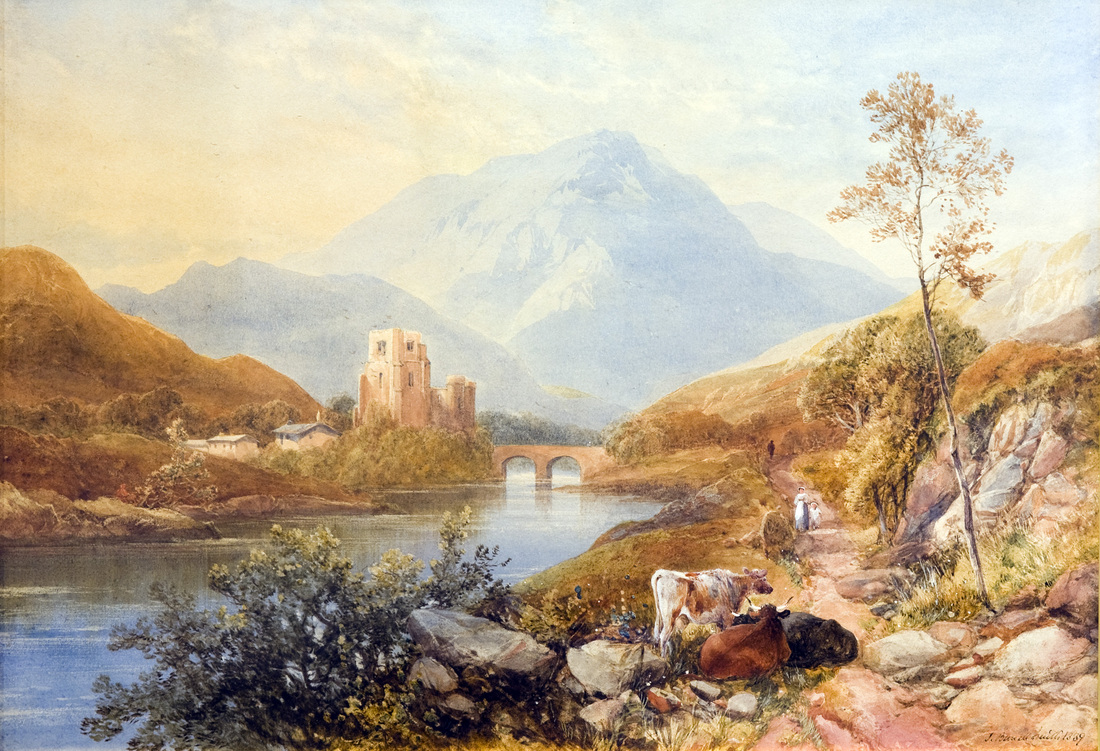Landscape with Cattle
|
Research by Susan Field & Jean Holland
|
|
ARTIST James Burrell Smith was a landscape painter, specialising in watercolours, who was born in 1822 in the south of England. In 1843 he moved to Alnwick, Northumberland, where he received tuition from Thomas Miles Richardson Senior, a schoolmaster who later became a professional full-time artist. He painted landscapes, particularly of river scenes, waterfalls, lakes, often with mountains in the background and anglers or small groups of cattle in the foreground. He painted in many parts of England, in particular the Lake District, but also views of Wales and Scottish lochs and castles. Smith travelled widely on the Continent producing river views such as Cologne on the Rhine (1865) and also scenes of Lake Como and Lake Geneva. He exhibited at Suffolk Street between 1850 and 1881. James Burrell Smith died on 16 December 1897 in West Kensington, London. PAINTING This beautiful watercolour riverscape is typical of Smith’s work. The picture is perfectly balanced with a strong triangular frame giving a feeling of peace and stability, the mountains in the distance forming the apex. The strong dynamic lines of the mountains drawn from the left and right sides of the picture, if carried through, meet in the middle at the bridge whose horizontal static line adds stability to the scene. The journey from the shallow to the deep picture plane is made by the eye following the river from the large bush and the group of cows in the foreground to a focal point, the bridge in the centre, and then up to the mountains behind. The artist has used a style of naturalism in the details of the flora and the animals in the foreground, much as did the Pre-Raphaelites, with fine detailing on the stones. The palette shows very natural colours, with skilful use of toning and light creating a feeling of airiness and lightness of mood. The warm browns and ochres add to the feeling of warmth and peace. As the eye progresses into the picture the style becomes more painterly, with the figures on the path merely suggested and the far mountains becoming quite hazy, emphasising distance, as they meet a misty, airy sky. |
|

